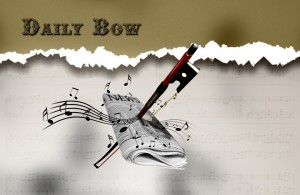East meets West in the Strings of a Violin
Creativity in music is an incredible and somewhat mysterious force. How do some musicians generate unique and innovative ideas in music?
Personal experiences and reflection on those experiences is a powerful part of the creativity of artists. These resources give artists a treasure trove of material to work with and channel.
One Indian musician has taken that thought and run with it.
…(T)he violin remains a popular South Asian instrument, although these days its strings play a different tune.
That’s something the world is increasingly happy about, thanks largely to the efforts of L. Subramaniam, the acknowledged master of the Indian violin, and the son of the man who first made it an accepted vehicle for the deep complexities of South Indian classical music.
The members of Subramaniam’s family were not the first to adapt the instrument to the demands of melakarta and tala, as the scales and rhythms of southern India are called. According to the violinist, one Balu-swami Dikshitar saw the violin being played in Madras during the 19th century, and was immediately smitten.
“He got fascinated because it was a fretless instrument, and so you could play microtones, slide notes, and do all the ornamentation,” Subramaniam explains, in a late-night phone call from Paris. “He thought it would be great, so he learned and he started adapting it to Indian music. But at that point it was an accompanying instrument, even though there is a very strong belief that bowed instruments had existed in India much earlier.”















No comments yet.